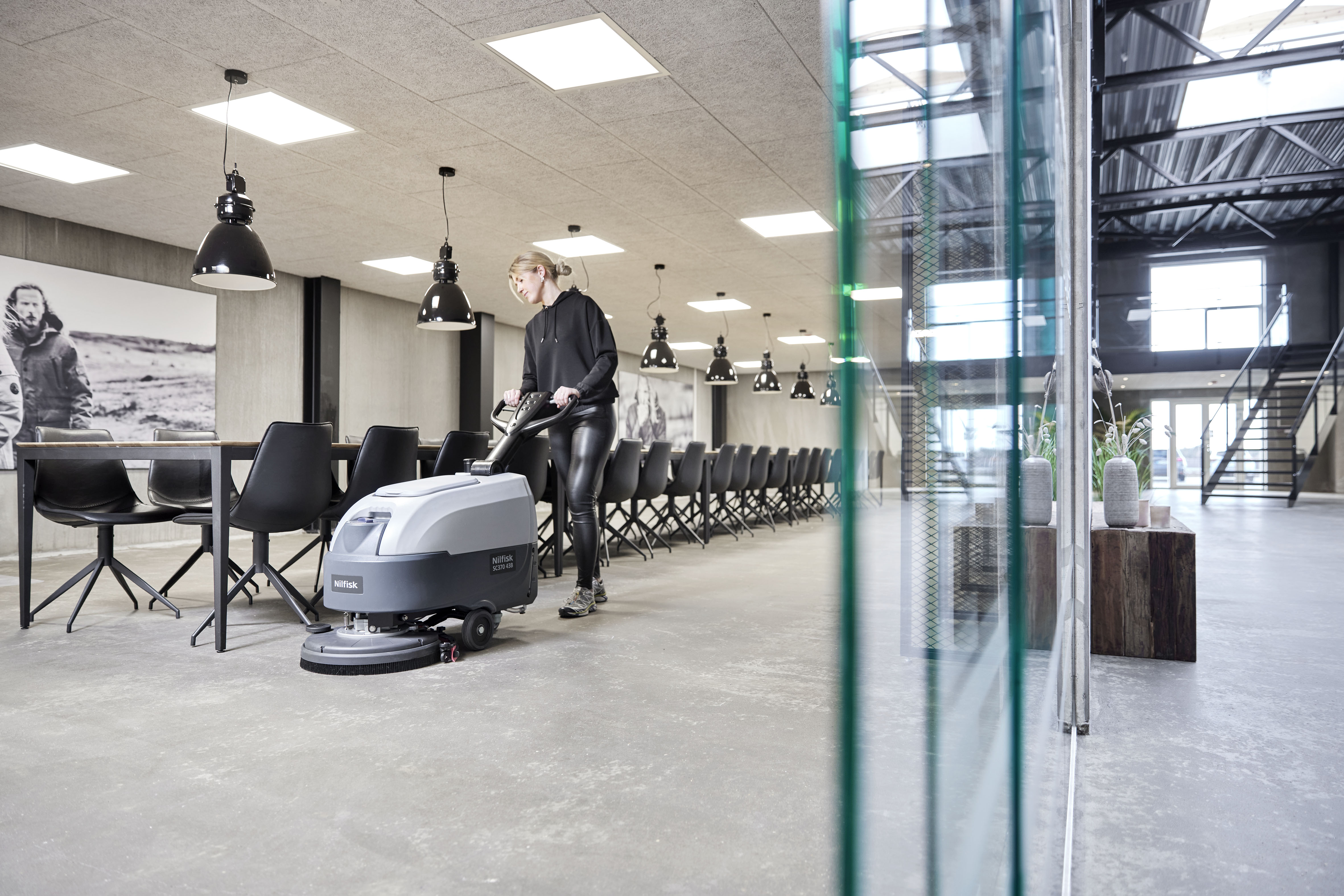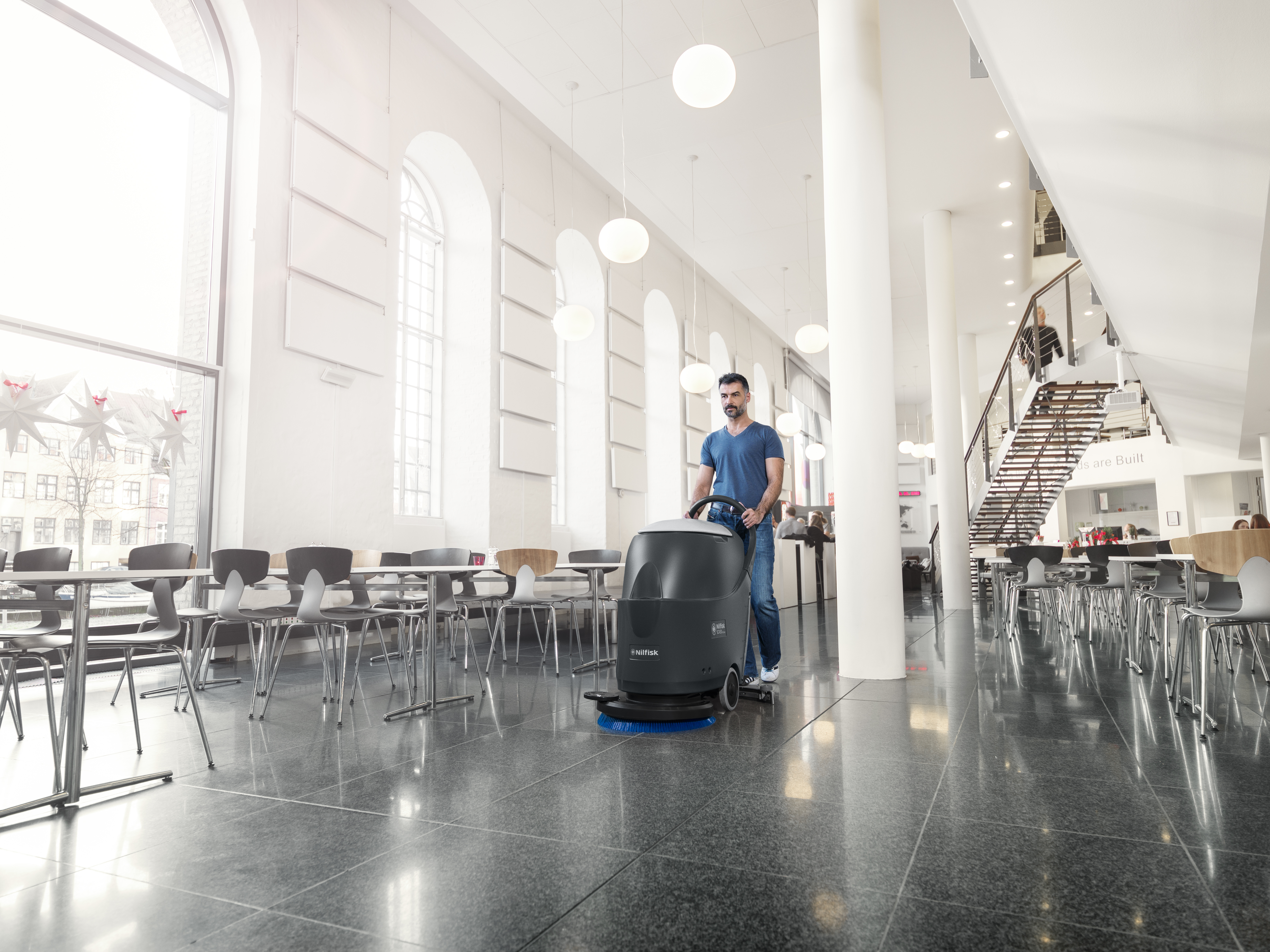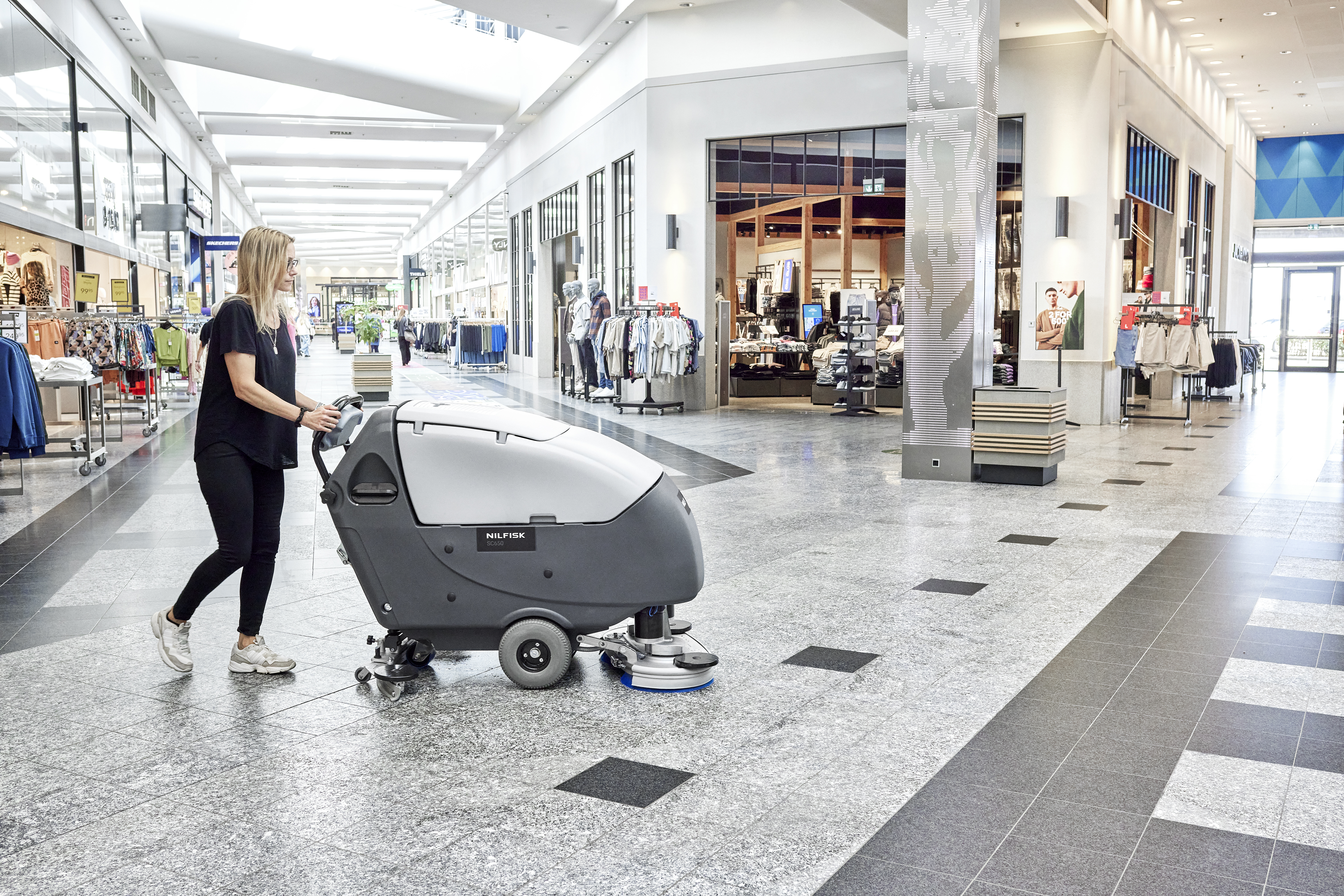Key specifications
Brush width
The width of a scrubber's cleaning path directly affects how much floor space it can cover in a single pass. Built with consistent brush pressure and optimal water-detergent mixing capabilities, our scrubber dryers also offer more value than using a broom.
Maximum running time per hour
The longer the running time of your scrubber dryer, the more productive and cost-effective your operators can be.
Recovery tank per liter
The larger the tank, the longer you can clean. Our scrubber dryers also come with smart chemical portioning systems, ensuring precision in chemical and detergent usage.
Explore products
Types of walk-behind scrubber dryers

Small walk-behind scrubber dryers
With our small walk-behind scrubber dryers, enjoy greater maneuverability and efficiency, for a more streamlined cleaning process.

Medium walk-behind scrubber dryers
With a medium-sized walk-behind scrubber dryer, keep schools, supermarkets, hospitals and other similar sized areas clean.

Large walk-behind scrubber dryers
Our large walk-behind scrubber dryers are designed to keep warehouses, airports, malls and other large areas clean.
Maximize the way you clean
When it comes to efficient cleaning, every detail matters. Follow these seven tips to get the most from your scrubber dryer every day.
- Use a chemical portioning system. A scrubber dryer with a chemical dispensing system automatically uses the exact quantity of detergent you need without requiring your operators to manually add the right mix or remove and empty the tank after each use.
- Keep your scrubber dryer clean and dry: You can’t clean a floor with dirty equipment. All parts of the scrubber dryer including brushes and pads should be thoroughly washed and allowed to fully dry after each use.
- Regularly inspect squeegees and blades: If your squeegees aren’t kept in good condition, your scrubber dryer won’t pick up dirty water effectively. You should also keep the recovery tank lid open after use as this will help your machine dry more efficiently after being cleaned – eliminating odor-causing bacteria.
- Slow and steady: Good cleaning results require the right amount of water and chemicals – and giving your scrubber dryer enough time to do its work. Adjust the water flow rate and down pressure to the correct levels depending on the soil load of the floor in question and allow for sufficient dwell time. You can choose from stand-on/ride-on scrubber dryers or walk-behind scrubber dryers depending on your need.
- Use cylindrical scrubbing when needed: Cylindrical scrubber dryers can sweep up large debris and scrub a floor in a single pass. Helping operators remove the need to pre-sweep in areas where there is a lot of loose debris, thereby saving a considerable amount of time.
- Choose the right pads: Pads containing microscopic diamonds or cubic zirconia provide excellent cleaning results for certain floor types, with research showing such pads also significantly decrease the number of bacteria left behind.
- Double scrub if required: If a space is particularly dirty, double scrubbing may be the only way to remove stubborn stains.






